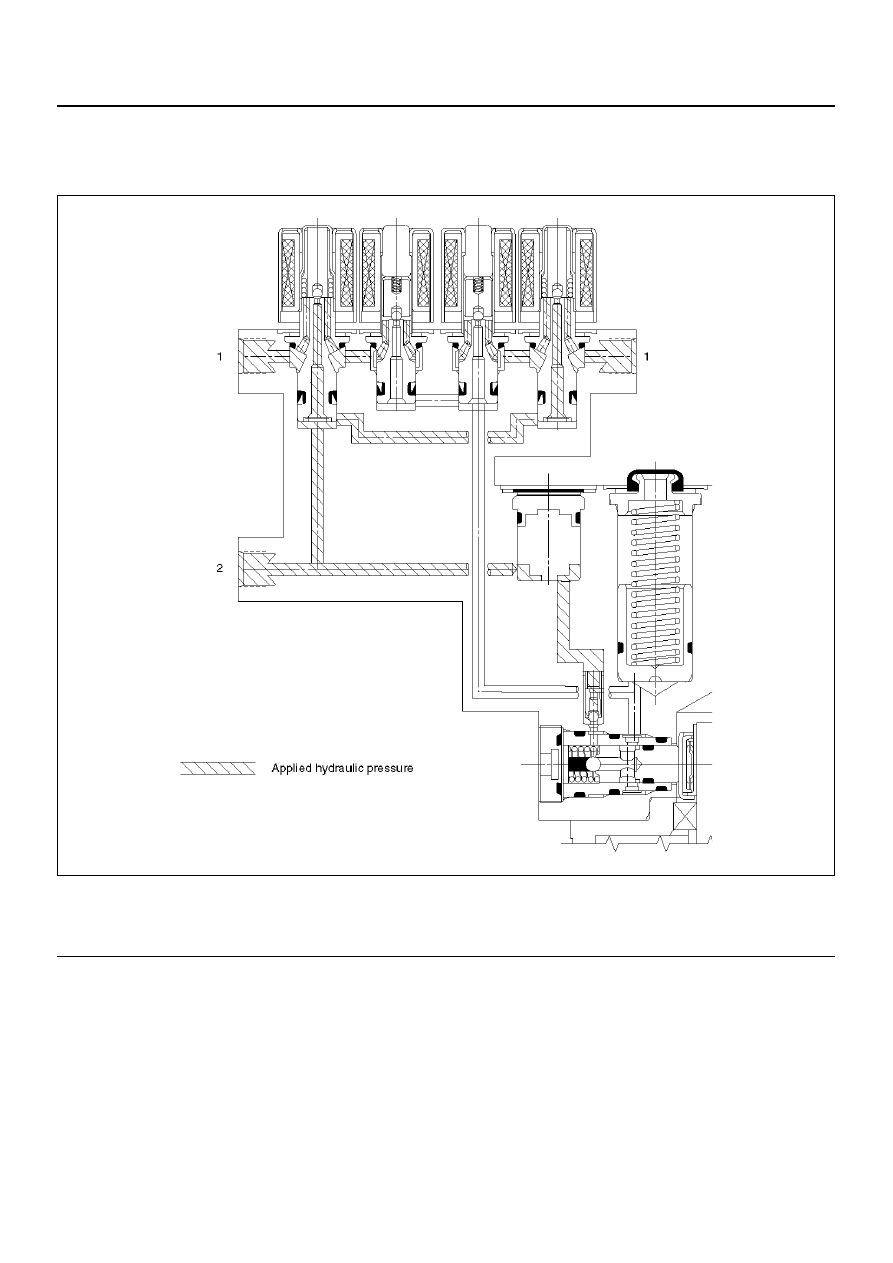Content .. 1167 1168 1169 1170 ..
Isuzu Amigo / Axiom / Trooper / Rodeo / VehiCross. Manual - part 1169

BRAKE CONTROL SYSTEM
5A–5
Normal Braking
During normal (non anti-lock) braking, the solenoid
valves has current flow. The dump valve is closed and
the isolation valve is opened due to spring force.
Brake fluid travels through the centre of the isolation
valve (normally open) around the dump valve (normally
closed) then to the brake pistons.
C05RW010
EndOFCallout
Legend
(1) Brake
(2) Master Cylinder